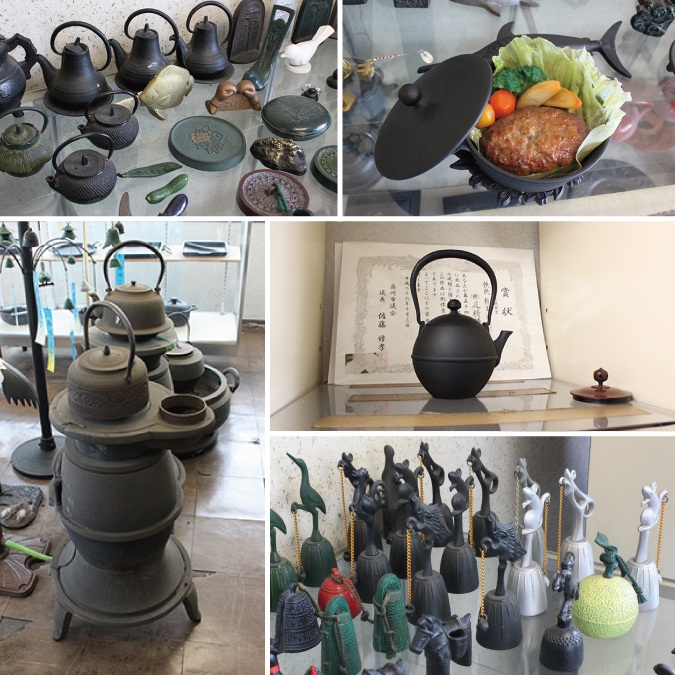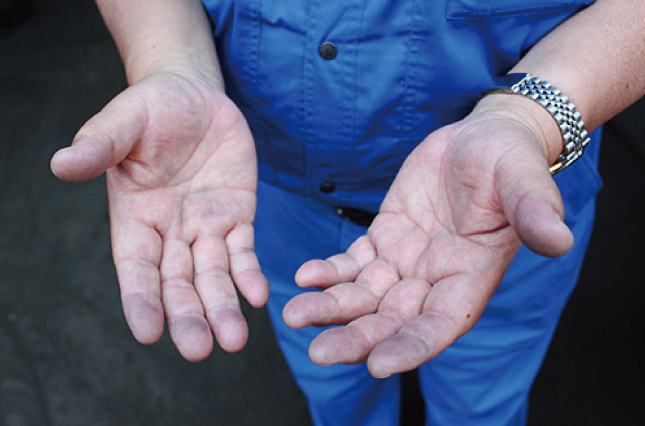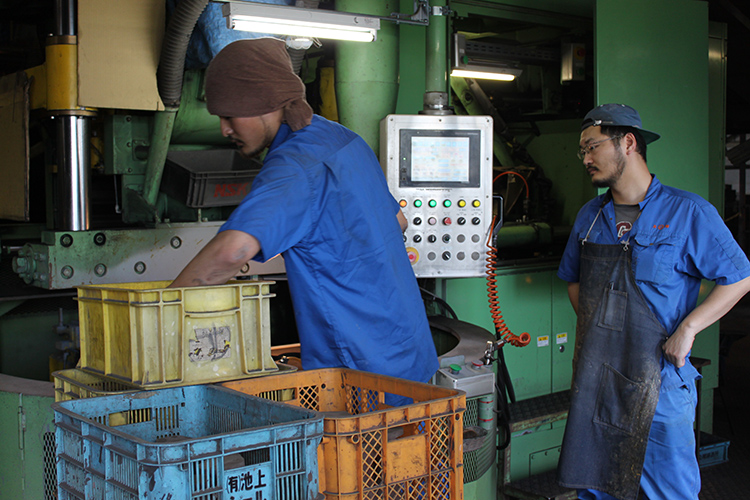OISEI Foundry in Iwate / Nambu Ironware
Story to show Japanese craftsmanship through the things, the place and the people related to Cohana’s products. Our first story is about OISEI Foundry in Iwate, the birthplace of “Nambu Iron Paperweight”.

In 1975, Nambu Ironware was designated as the first traditional craft by the Japanese government. From the very early stage of the Cohana project, we had a strong desire to create a paperweight using Nambu Ironware.
Mr. Takashi Oikawa, the chairman of OISEI Foundry, responded to our wish and gladly accepted our idea. We were impressed by his generosity in responding to our various requests, such as making it stackable, adjusting the hole diameter so that it could be used as a pen stand, and using a tasteful color.
I was wondering how Cohana’s Nambu Iron Paperweights are made by the hands of artisans…. The plane arrived at Iwate Hanamaki Airport with my excited anticipation for the interview.

Haneda-cho, Mizusawa-ku, where the OISEI Foundry is located, is a “foundry town” with many foundry-related companies lined up side by side. Blessed with an abundance of resources and the water transportation of the Kitakami River, casting has been actively carried out in this area since ancient times.
As we drove through the lush greenery, we spotted the words “OISEI Foundry”.


Mr. Takashi Oikawa, the chairman of the board, welcomed us.
Mr. Takashi Oikawa was the 6th representative of OISEI Foundry, which started its operation in 1916. His son Keiichi has taken over as the representative director. He is currently engaged in training future generations and planning new products as the chairman.
I was led to the showroom and able to listen to detailed talk about their products.

▲The showroom is filled with a variety of Nambu ironware products that have been made. From traditional iron kettles, wind chimes, and cooking utensils to rare stoves.
―Please tell me the history of Nambu ironware.
Originally, the casting industry in Mizusawa began in the late Heian period (794-1185) when the Fujiwara clan invited casting craftsmen from Omi Province to polish the skills of the local people.
Production began with special-purpose items such as bells and statues of Buddha for temples, and gradually expanded to household items such as baths, pots, and iron kettles. In the old days, it took more time and effort to make things than it does now, and things were used with great care by people. Iron is recyclable, so when it breaks, it can be melted down and reused to create something new, and it was valued as a wonderful material.
However, there was a time when Nambu ironware was not so favored.
―Dark Age?
It was 1938, the time of Seishiro Oikawa, the second representative. The military demand for Nambu ironware became so strong that iron kettles, pots, and other daily necessities had to be discontinued. Since the material was recyclable, even temple bells were collected, melted down, and turned into guns and airplane parts.
―A bell used to pray for peace was used for the war… It’s a sad story.
That’s true. At that time, sewing machine parts were the only iron products left that could be used for daily life. The sewing tools are also connected to Cohana. Production of these discontinued household items was restarted in 1947 after the end of the war, and I hope that this story conveys the desperate efforts of the craftsmen and their predecessors to preserve Nambu ironware.
― Can you tell us how to care the Nambu Iron Paperweight?
If it gets wet, wipe it well with a dry cloth. For pots and pans, you can apply cooking oil to prevent rusting, but for this type of product, touching it every day will make it less likely to rust due to the oil on your hands.
―It’s nice to know that using the product can be a form of care.
I could picture Cohana’s Nambu Iron Paperweights being used by customers and blending into their space as they gain in texture. Yeah, I hope they will be used with care.
―As a last question, what do you value most in your work?
I would like to propose a new form of Nambu ironware that meets the needs of the times, while maintaining the traditional manufacturing methods that have been handed down by the craftsmen and their predecessors, and making the most of the unique texture of Nambu ironware.
―Thank you very much.
After the talk, I was invited to see the factory. Once I stepped into the factory, the heat was intense. Since this is the place where hot iron is handled, I got quite nerves.
I was able to go around the site where Nambu ironware is made while listening to the explanation.

▲The process of transferring molten iron into a container. A powerful scene.

▲The process of pouring molten iron from a ladle into a mold.
The molds are placed on a transport belt and moving slowly; the molten metal, which reaches 1,500 degrees Celsius, hardens rapidly when the temperature drops, so speed and accuracy are required from the craftsmen.

▲The process of making a “sand mold,” which uses sand to create the mold for casting.
The mold is pressed tightly into the sand, and then sand is poured on top of the mold and hit with a hammer to make it even. Depending on the quality of the sand mold, the texture of the product will change, so this is a process that requires careful attention.

▲We were shown the area where the molds and the tool are stored. The factory is clean and tidy, and they have made a thorough effort to create a workplace that can move efficiently.
In the end, I had the chance to see Mr. Oikawa’s hands.

The accumulation of the past days can be felt from the “hands of craftsmen”. There are also young craftsmen at OISEI Foundry, and I was moved to think that the skills are passed on from hand to hand.

We hope that this wonderful tradition will continue into the future, and with our Nambu Iron Paperweight, we can convey to all of you the beauty of Nambu ironware, the stories of the artisans, and the wonder of manufacturing.
OISEI Foundry Co., Ltd.
Haneda-cho, Mizusawa-ku, Oshu City, which is said to be the hometown of Nanbu ironware along with Morioka, is a “casting town” where casting-related companies line the streets. The company started operations here in 1916. The company continues to produce high-precision products by utilizing the excellent traditional casting technology cultivated over many years and adopting advanced technology.
OISEI Foundry Co., Ltd. HP http://www.oisei.co.jp/